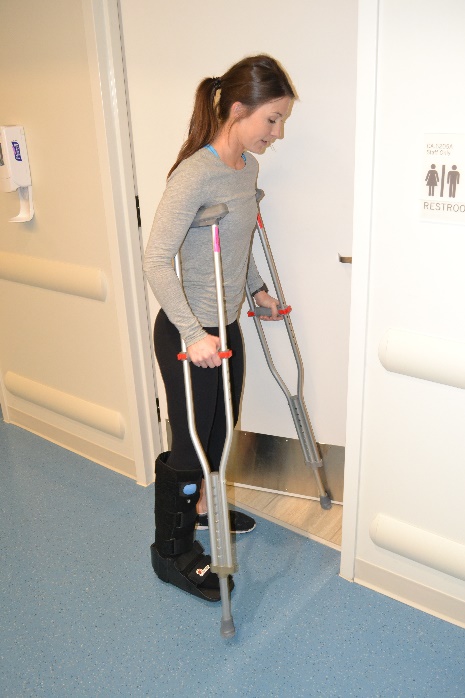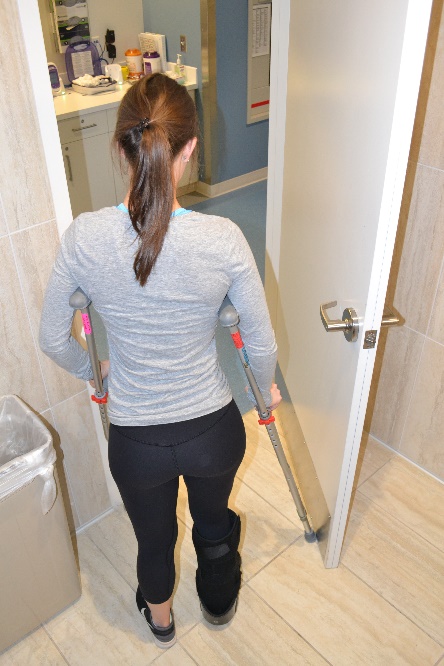Using Crutches
For helpful videos on using crutches, visit: http://www.kansashealthsystem.com/crutches.
Under Patient Materials, select Crutch Use Education Series.
These instructions will help you get around while on crutches.

Fitting Your Crutches:
Proper fitting helps you use your crutches safely and effectively. When fitting crutches, stand up straight and wear the shoes you will normally use to walk. If the crutches don’t feel right, ask your doctor, nurse, or physical therapist to check the fit.
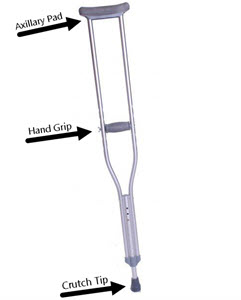
Using crutches requires good coordination, balance, and upper body strength. If you’re using only one crutch, keep it on your good side unless told otherwise.
The crutches fit if:
-
You can put 2 to 3 fingers between your armpit and the top of the axillary pad.
-
Your arms are slightly bent at the elbows when your hands are on the handgrips.
-
Your wrists are even with the handgrips when your arms hang at your sides.

Precautions:
-
Crutches should have nonskid rubber tips to prevent slipping. Change tips that look worn.
-
Don’t let your armpits rest on the pads — this can cause tingling, numbness, and loss of muscle strength in your arm.
-
Don’t use crutches that are too short, too long, or mismatched. They can cause back pain and falls.
-
In wet weather, dry the crutch tips when coming indoors.
Sitting and Standing:
-
Back up until you feel the chair with the back of your legs. Hold both crutches in the hand on your sore side.
-
Grab the armrest or the side of the chair with your free hand.
-
Lower yourself onto the front of the chair; then slide back.
-
To get up, reverse the 3 steps.
*Tip: Find sturdy, high-seated chairs with arms. If you must use a chair that swivels or has wheels, back it against something stable before you sit down.
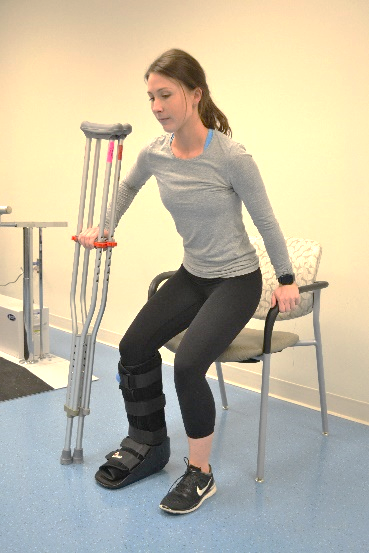
Walking:
-
With crutches in place, lean onto your hands, not on your armpits.
-
Move your sore leg and crutches forward at the same time. Keep your sore leg lined up with the crutches.
-
Look straight ahead, and step through the crutches with your good leg.
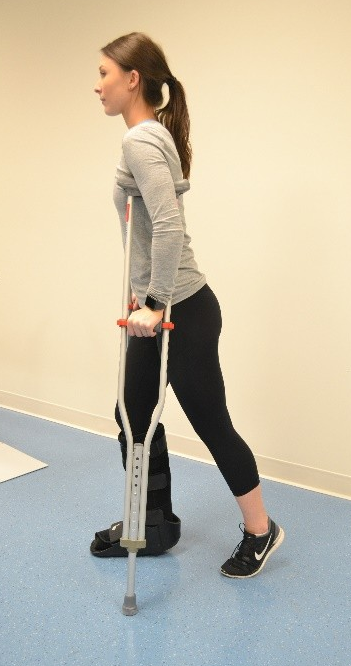

Stairs:
For greater stability, it is recommended to use a rail, however if a rail is not available you can use two crutches. It is recommended to have someone with you the first time you use stairs.
Walking up stairs:
-
Hold the rail with one hand and both crutches in the other. If no rail is available, use two crutches. Support your weight evenly between the rail and the crutches.
-
With the crutches and sore leg on the lower step, step up with your good leg.

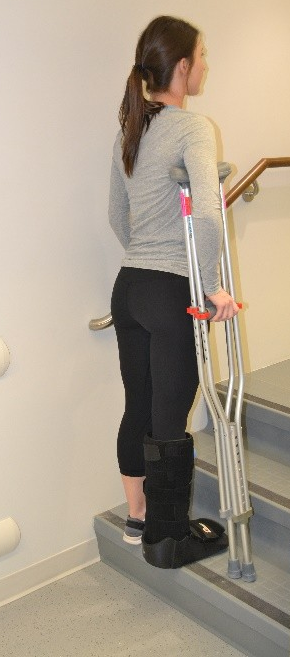
Walking down stairs:
-
Hold the rail with one hand and both crutches in the other.
-
With your weight on your good leg, step down with your sore leg and crutches.
-
Using the crutches and rail for balance, slowly bring your good leg down to the same step.
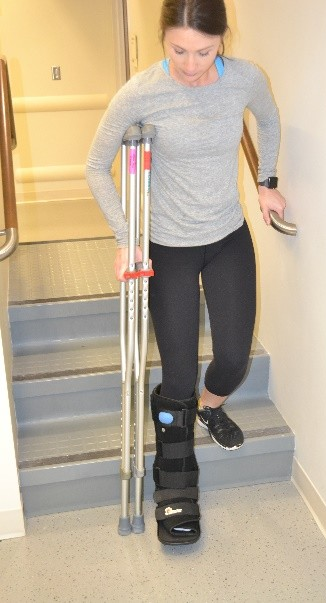
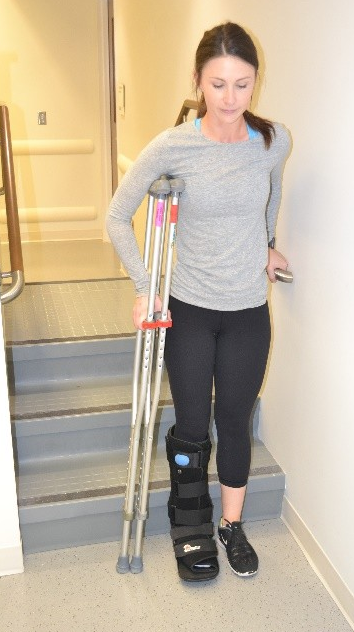
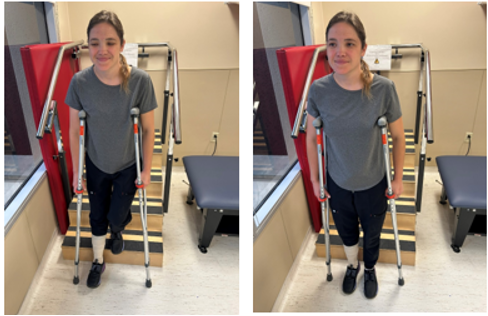
Getting into cars:
-
Follow the first step above for sitting in a chair. Use the door frame or the dashboard for support as you lower yourself. Watch your head. Don’t hold on to the car door, as it may close on you.
-
Once seated, use your hands to lift your sore leg into the car.
Going through doors:
-
To push a door open, stand sideways when you push the door.
-
To pull a door open, stand to the side. Get your balance and pull the door fully open with your hand. Plant the tip of the nearest crutch inside the door to act as a doorstop. Leave the crutch in place until you’ve walked through.
-
Tip: Avoid revolving doors. Instead, use handicapped accessible entrances.
